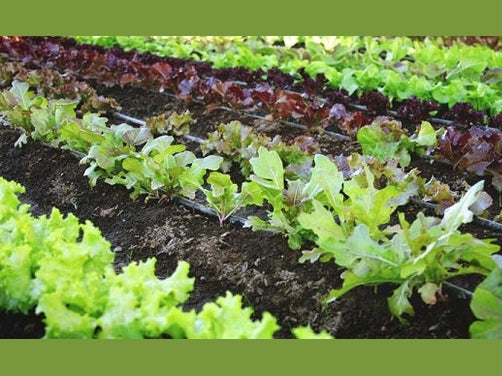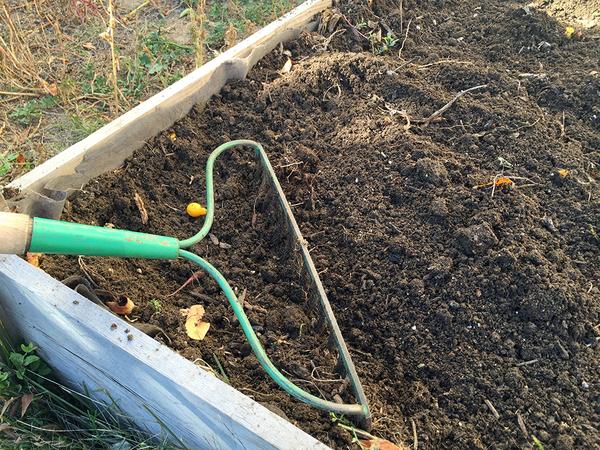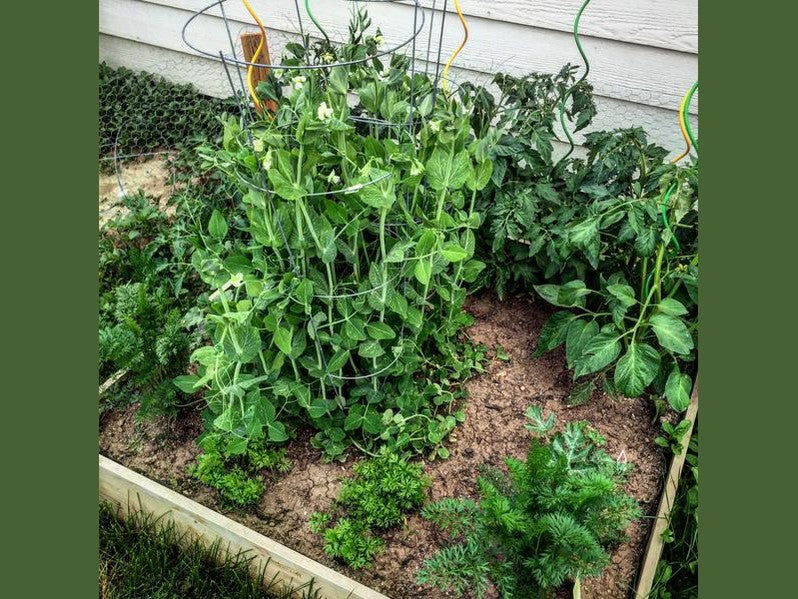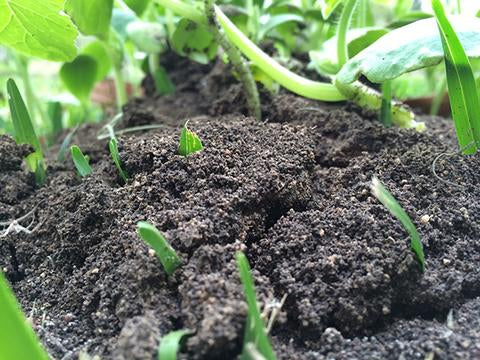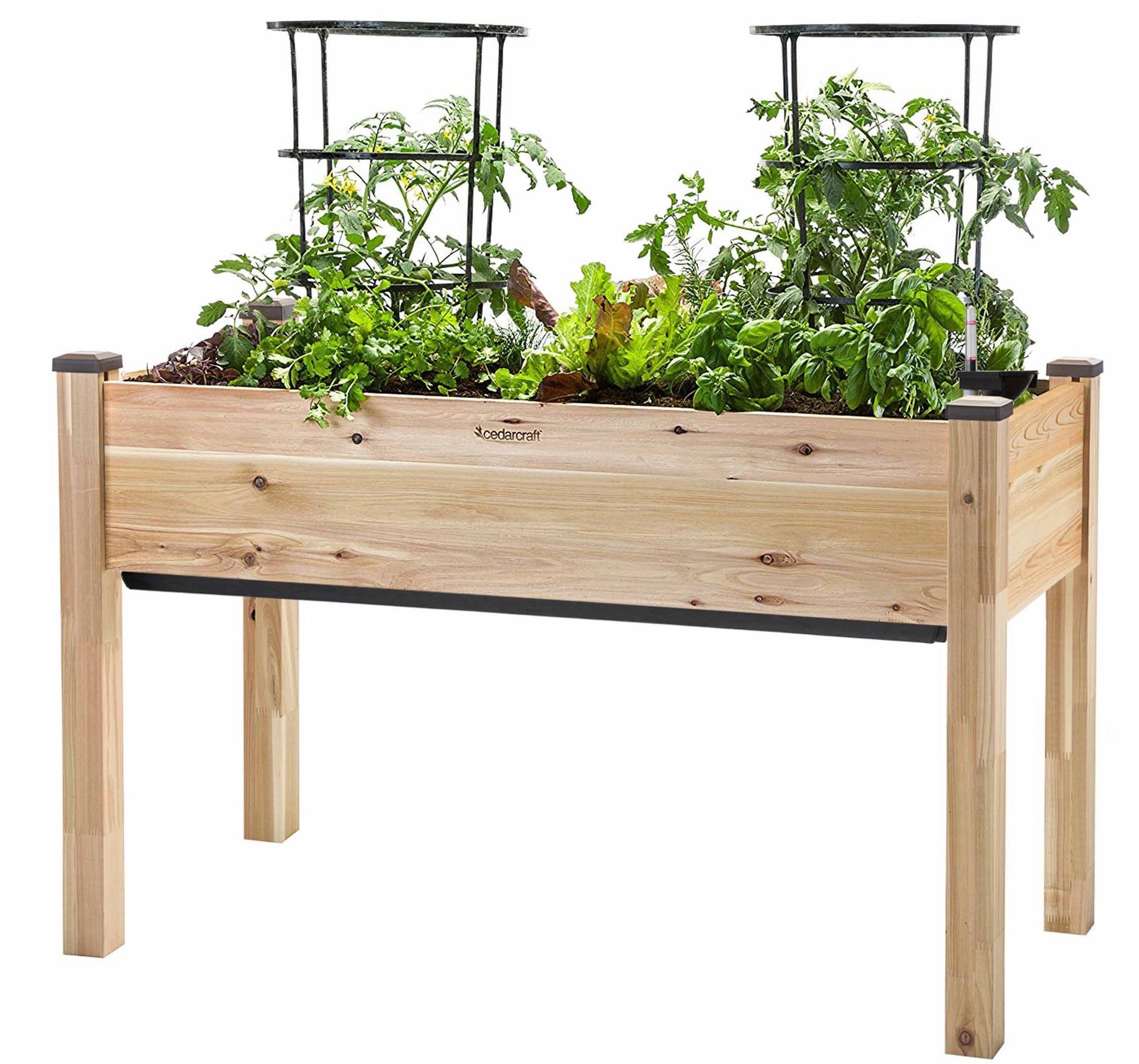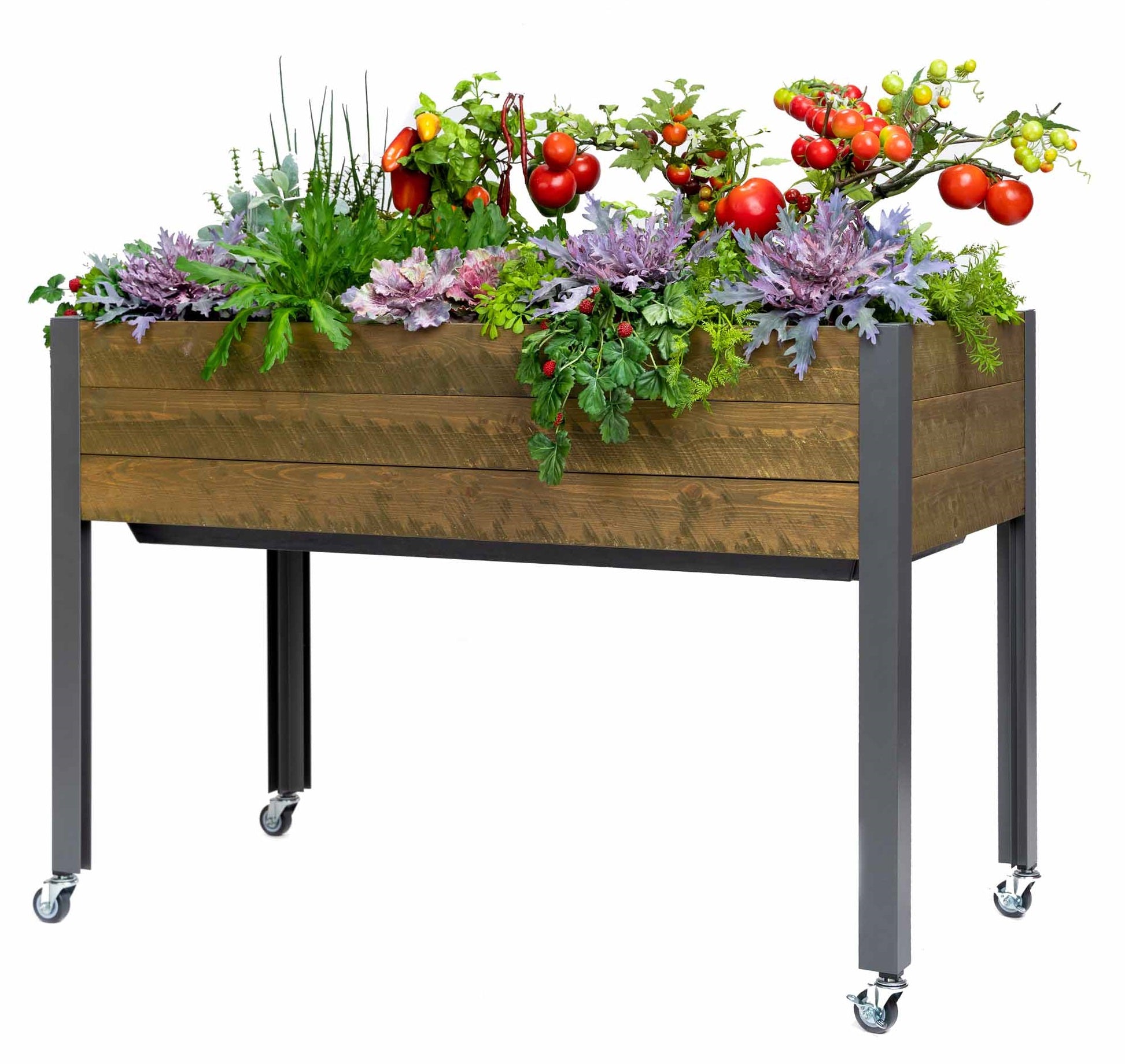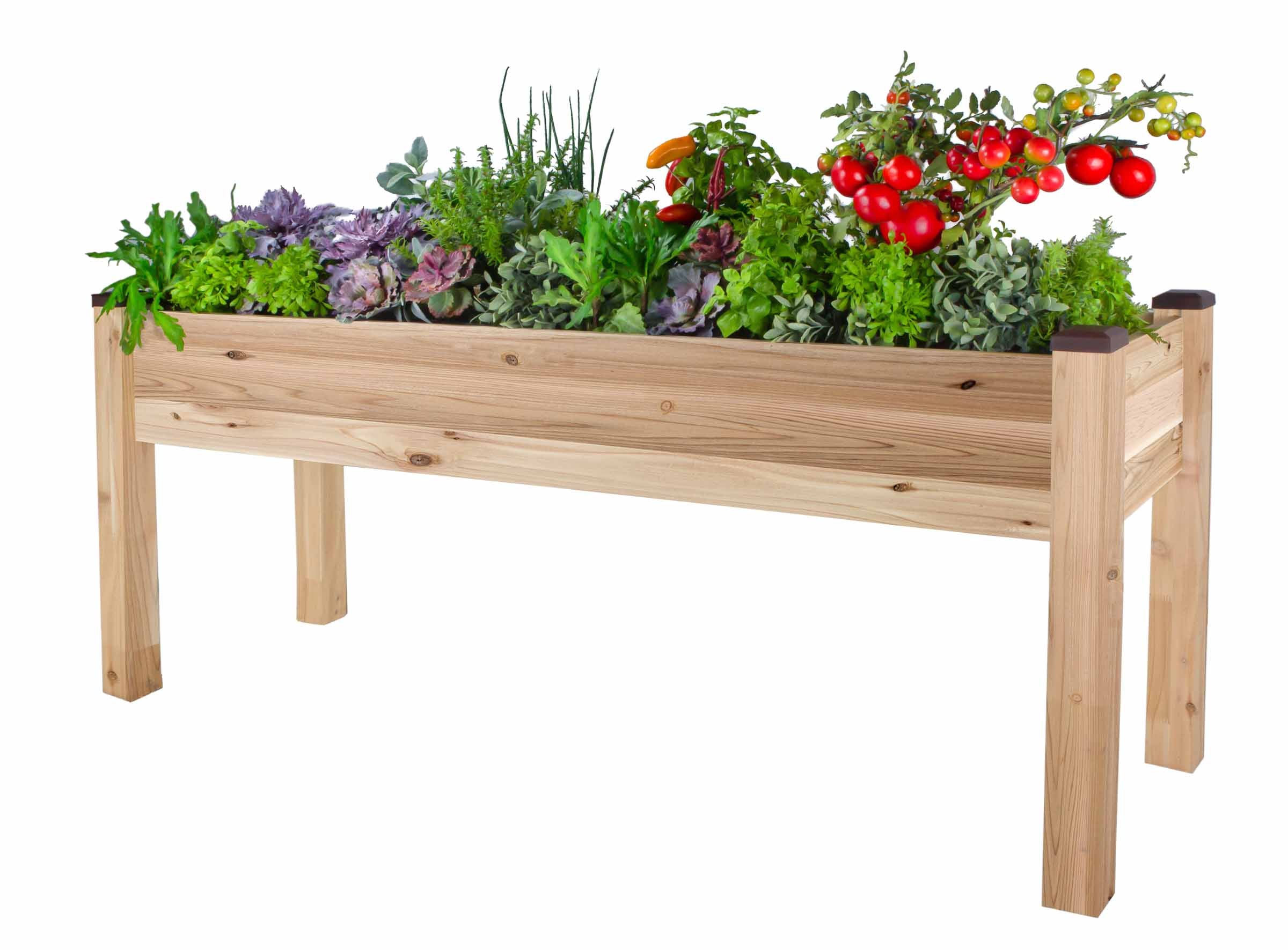Gardening Adventures
Fertilizers for Container Gardens
Now that you have your plants all set up in their new homes, it is time to tend them and help them thrive. Fertilizers are a necessary part of container gardening because the plants don't have access to the minerals and nutrients found in soil. Potting soil provides nutrients in the beginning but over time it depletes. The plants need supplements to ensure that they grow and flourish. Types of Fertilizer Slow-release, or timed-release, fertilizers contain a water soluble fertilizer that is sheathed in a ball of permeable resin coating. Nutrients are released in small amounts when the fertilizer comes in contact with water. When you use this type of fertilizer, every time you water the container plants, they are being fertilized. This type of fertilizer is mixed into the potting soil and can last up to 3-4 months. The benefit to using this type of fertilizer is that it only has to be applied once or twice during a growing season and you don't have to worry about forgetting to fertilize. The downside is that it is difficult to manage how much the plants are getting at any one time. If you have a self-watering planter, slow-release fertilizers are not a good option. Liquid fertilizers are pre-mixed liquids that are then added to water and given to your plants during their regular watering time. They are generally applied every 2 weeks. The upside to this type of fertilizer is that it can be adjusted easily based on how the plants are doing. Adding more or less or skipping an application is easy. The main drawback is that it requires a person to remember to do it on a regular schedule. For the time-crunched or forgetful gardener, this may not be the best option. When to Apply Fertilizer and How Much? There is no set answer to this question because every plant and situation varies. How much to use depends on the type of plant, what stage of the growing season you are in, and how long it has been since the last application. A good rule of thumb is to follow what the fertilizer label says and then adjust it as needed based on how the plants react. It is better to under-fertilize a plant as opposed to over-fertilizing, so if you are concerned, always use a smaller amount. Plants need different types and amounts of fertilizer for different growth stages. To understand better what your plants need, it is important to understand how fertilizer is compiled. Fertilizer is always rated using 3 numbers that are written like 10-2-2. This is the NPK value. The numbers will vary but the order in which they are presented are always the same. The first number is the amount of nitrogen, the second is the amount of phosphorous, and the third is the amount of potassium. Organic and Non-Organic Fertilizer Options There are ups and downs to both types and what you use is dependent on your preferences. You may find that a combination of the two works best for your plants. Organic fertilizers include fish meal emulsions, liquid kelp, alfalfa meal, fresh worm castings, and feather meal. Each one has a specific purpose and it is often necessary to keep a wide variety on hand to supplement the soil properly. Additionally, it is often hard to know exactly the amount of nutrients and minerals in each one. An organic fertilizer takes more time to show results than a synthetic one, however, the results are generally more long term. Synthetic fertilizers are water-soluble and highly specific. The nutrients and minerals are in exact amounts and you know explicitly what the plants are receiving. It is easier to find exact nutrient blends for your particular situation and the mixes are generally less expensive than organic options. Plants benefit quickly from synthetic fertilizers, however, they usually need to be applied more often. Types of Organic Fertilizers When selecting an organic fertilizer, it is important to pay attention to the NPK(nitrogen, phosphorous, potassium) values. Not all organic fertilizers contain all three. A good organic fertilizer will list its NPK value and whether it is plant-based, manure-based, or a blend of the two. Organic Fertilizers are more expensive than synthetic, however, their effects are longer lasting and improve the overall quality of the soil. Worm Castings – A great choice for the entire growing season. There are quick-release and slow-release nutrients that will help with all growing stages and beneficial bacteria to assist the plants in absorbing the nutrients. They are high in iron, calcium, magnesium, sulfur and trace minerals. Alfalfa Meal – Inexpensive and generally widely available, this fertilizer gives a steady supply of nutrients throughout the growing season. Feather Meal – This is best added as a supplement during the mid-growth stage and provides a good source of nitrogen to the plants. Kelp Meal & Seaweed – Amend the soil in the beginning with this to add trace minerals which will help plants get started and thrive. Seaweed can also be used for some insect control. Oyster Shell Flour/Crushed Dried Eggshells – These add calcium. Compost – High in nutrients and microorganisms, this is something that should be added to any organic garden. The exact nutrients will vary depending on what was in the compost. Manure – Not all manures are created equal. A lot depends on the health of the animals, the quality of their food, and how the manure was handled. If it is possible to get manure from a local source, that is best. It is an excellent source of NPK and has been used for millennia with success. Most manures should be composted before being added to vegetable gardens to kill pathogens and weed seeds. The exceptions to this are rabbit, alpaca, and llama manure. Blends – The market today is brimming with organic fertilizer options which contain some combination of the mediums listed above. A few good ones are Dr. Earth Organics, Neptune's Harvest, and Unco Industries Earthworm Castings. Synthetic Fertilizers Simpler, by far, because they are designed to be an all-in-one and simple to use. They will need to be applied more often and on a regular schedule. They are easier to work with and provide the plants with the nutrients they need, however, they don't do much to improve the overall quality of the soil. Synthetic fertilizers are widely available and usually less expensive but since they need to be added more often, it may work out to be similar in overall cost. There are a plethora of synthetic fertilizers on the market. Some popular ones include Miracle-Gro, Scotts, and Pennington. All container plants need fertilizer in order to prosper. The one that is best for your plants depends entirely on where you are and what you are growing. Look through all the options and find the best one for your plants. Don't be afraid to experiment a bit and test the different types for yourself. Your plants are depending on you! For more information about container gardening and to learn some gardening tricks and tips, follow us on Facebook.
Learn moreGardening in Urban or Limited Spaces
If space is an issue, don't be discouraged! There are many ways to utilize balconies, porches, and tiny lawn spaces to support a garden. A garden doesn't have to be the traditional patch of dirt in the backyard. There are lots of options for growing fresh vegetables and beautiful flowers regardless of how much area is available.
Learn moreContainer Garden Soil 101
Soil is arguably one of the most important aspects to growing a successful garden. It's the foundation of where your food and flowers come from! You can plant your garden in any container, and purchase your seeds from anywhere, but it's your soil that will make your garden grow. Container gardening is a little different than a traditional garden, and we want you to have your most successful CedarCraft garden yet. Here is a handy rundown of what you need to know about container gardening soil to have a bountiful harvest. Garden Soil Is Not Container Soil As tempting as it might be to transfer your garden topsoil to your container garden, that's a sure way to stunt your planter garden's growth. Container gardens need ample air, water, and nutrients from the soil to support your sprouting plants. By using garden soil, it will be easy to flood your garden and drown your plants, while decreasing their nutrients in the process. You should fill the containers with a "soilless" blend that will retain lots of moisture and resist compaction. Compaction is what will decrease the amount of air by the roots, and inhibiting growth by making it more difficult for the sprouts to break through the surface of the soil. Mel's Mix is a tried and true container soil that will work well in both your planter and raised garden bed! Warm Soil Advantage While your neighbors may be spending time doing soil prep work for their garden, you're ahead of schedule with your planters! Container soil will rarely freeze and is easy to maintain over the winter by covering your raised garden bed with leaf mulch or a tarp. Because the soil maintains warmth, it's less work for you and it extends your growing season! If you do find cold soil to be any problem, you can place rocks in your garden to help distribute heat from the sun. Watch Your Water One of the biggest challenges with container gardening is maintaining the moisture balance in your soil. It can be easy to over-water and flood your flowers, but it's also easy for them to dry out quickly. Vegetables need air just as much as water in the soil. You can use straw or mulch to help maintain moisture, prevent over-watering, and prohibit water splashing on the leaves and fruit, potentially causing damage. Rotate Your Soil Just like our farmer friends in the field, container soil becomes depleted over the years, especially if you're continually growing the same vegetables in it from season to season. The soil breaks down, creating compaction, drainage issues, depletion of nutrients, and can it promote the growth of disease in your plants. You can freshen up container soils by adding a fresh blend whenever you start your planting season. Just replace 25% of the mix with a new medium. Don't forget to add some air into the mix by loosening the soil in the planter, while breaking up the clumps and picking out any roots. You can stretch the life of your planter and raised garden bed soil for several seasons. After 6 to 7 years it may be time to replace your container garden soil and start fresh.
Learn moreIntroduction to Container Gardening
The versatility of using containers to grow plants can't be beaten. Container gardening gives you the ability to garden all year-round regardless of your outdoor climate. Plants in containers are more accessible, grow fewer weeds, and require fewer gardening tools. They are perfect for situations where outdoor space simply isn't an option.
Learn moreGrowing CedarCraft
Spring is just around the corner and we're getting ready for the 2016 gardening season! CedarCraft is growing like wildflowers and this gardening season is sure to be a bumper crop of good stuff. We have a brand new product line that includes multiple sizes for our Elevated planters, smaller tiered Cascading planters, expandable raised beds, and self-watering planters! We're really excited to see what people plant in them this year. This year you'll find us in more retail locations, including some rotations at various Costco stores across the country and in a few independent gardening centers, too! Be sure to follow us on our CedarCraft Facebook page to stay on top of those details as they grow! Along with our expanded product line, we're also expanding our blogger ambassadors. In 2015 we had four lovely bloggers gardening in a variety of different ways, helping all of our CedarCraft fans with ideas on what to plant and helpful gardening tips throughout the year. We're looking to grow our ambassadors to include 12 more! If you are a gardening blogger and interested in learning more about how to be part of our team and what it takes, please email us at socialmedia@cedarcraft.com. We're gearing up for a great gardening season with you!
Learn morePutting Your CedarCraft Garden To Bed
The first frost is just around the corner, if not already here, for many gardeners in colder climates. Harvest season is over and winter is creeping its cold, icy fingers into garden beds. It’s time to clean up and prepare for next spring by putting your CedarCraft garden to bed. Putting in the extra cleanup effort at the end of fall will help you start your spring gardening season off on the right foot. Your planters will be clean, and filled with healthy, warm soil earlier than gardeners waiting for the ground to thaw out, which means you get a gardening head start on everyone else! Here are the simple steps that you need to do to put your gardens to bed: Pull Out The Old By this time in the season many of the vines and stalks have wilted as they have finished their production. Flowers have gone to seed, and leaves have fallen. Pull up tomato, squash, pea, and bean plants, and leave your fall plantings of cold weather vegetables like kale and lettuce to harvest throughout the remaining season. Make sure to double check if your fruits, flowers, and herbs are perennials or annuals. Annuals will get cleared out from the planters, but your perennials, like strawberries, can stay in with a bit of pruning and some mulch to keep them warmer. You can protect tender perennials with a row blanket or plant blanket as well. When clearing things our, a good rule of thumb is that if a plant is yellow or brown, cut it down, if it’s green leave it be. Turn The Soil Once you have the old and dead plants cleared out, till the soil to get some oxygen in there, break up clumps from remaining roots, and encourage bugs and pests to find new homes for the winter. Add a layer of compost to the mix and top it off with mulch or autumn leaves that will break down over the winter season and add more nutrients to your planter garden bed. Plant Spring Bulbs Now is the perfect time to get your spring bulbs in soil. They’ll even grow well in a planter! Spread out your tulip, crocus, and other spring bulbs in your planter. Make sure to add a variety of early, mid, and late spring blooms for continued variety throughout the flowering season, right before vegetable planting season begins. Make sure you plant the bulbs with the pointed tip side up, push them down a few inches into the soil, and cover with mulch to protect them from winter soil cracking. Now kick back and enjoy your gardening break during the winter!
Learn moreLessons Learned From Planter Gardening This Season
Gardening is a mix of science and art. It’s possible that you can carefully craft the perfect garden space with optimal soil nutrients, ideal sunlight, and a well-timed watering system and have nothing go as planned. Even the best gardeners experience challenges during the growing season, and sometimes they have complete garden fails. Gardening is a learning process for everyone, not just a product, which is part of the appeal. It’s also comforting for beginning gardeners to know that even the most experienced gardeners still have their obstacles to overcome. Many of the pros live by the philosophy, “If you’re not killing plants, you’re not stretching yourself as a gardener.” Our CedarCraft team field-tests each one of our planters during the gardening season, growing a variety of fruits, vegetables, herbs, and flowers in the process. You can see how our own gardens grow on Instagram as we share photo updates throughout the year. Rest assured, even though our garden may look beautiful, we experience our own challenges too. We’d love to share some lessons that our Colorado team learned from the 2015 gardening season. Weather This is one of the biggest hurdles for every gardener around the world, and it has been since the beginning of time. Floods, droughts, cold snaps, high winds, and hail are all elements that can wreak havoc on your garden. Our Colorado team had an exceptionally wet and cold-ish May, right when the planting season began. It was a little too much for the cucumbers to bear and we lost them all. Lesson Learned: Patience is a virtue, especially in gardening. It’s better to wait a little longer than jump the gun when planting your starters to make sure they have a good chance of establishing roots. Soil We spent a lot of time on procuring the right mix of soil for all of the planters this year. What we found was with that particular mix, our tomatoes flourished and thrived in the ground planters, but our spinach and lettuce greens needed a little more help with the same mix in the Urban planter. We had to switch out soils in that planter, and once we did, the spinach grew like wild! Lesson Learned: Ground planters with sturdy plants do well with the soil mix we wrote about earlier this year. The Elevated planters will do better with a softer container soil mix. Water We did pretty well with keeping up on our watering cycles this year! Nothing dried out or wilted… until we went on vacation. Summer is a time to enjoy vacations with kids out of school and the warm-weather adventures at your feet. Our Colorado team went on a backpacking trip for a few days thinking that the garden would be OK. While there were cool temps in the high country, it was a lot warmer in the flatlands. We came back to find some of the plants drier than they should have been, which caused a few to bolt early. Lesson Learned: set up watering systems if you can, and at the very least, have a neighbor or friend come over to water your garden while you’re on vacation. We have some exciting new developments with our product line in 2016 that will help you with this! Look for an announcement in January. Pests This may have been the biggest challenge for us this year above all else. Rabbits scaled chicken wire fences to nap in the cilantro, birds filled up on strawberries, squirrels pilfered the peppers, and bugs munched on kale and cauliflower. It was garden warfare despite our best efforts with all methods of pest control. Lesson Learned: We’re still learning. We’ll see what we can do to lessen the likeness of “Mr. McGregor’s Garden” in 2016. Unexpected Experiments We had one planter that we lovingly called the “misfit garden” where we planted extra starters and companion planted plants that you’re not supposed to place next to each other. We didn’t have high hopes for this section of the garden, but decided to take the risk anyway to see what would happen. There were some fails in there for sure, like the extra cauliflower plants not producing anything at all, but we found some unexpected success, like potatoes and pumpkins thriving!! Lesson Learned: It’s OK to take risks! Don’t be afraid to fail, because you might just experience some unexpected successes. And sometimes those are the best! Despite our own challenges this year, we came out of it with first-hand knowledge to apply in the 2016 growing season, and we had some delicious harvests along the way. We’re certainly looking forward to the gardening adventures that the next year will bring!
Learn morePlanting Your Garden
The sun is shining, the grass is green, it’s time to get your hands dirty and plant your garden! Here are the things we've covered in other CedarCraft blog posts on what you need to know before you get those plants in your soil: How much soil do you need and what kind of mix? How to plan out your garden - considering square foot layout and companion planting How to keep critters out of your garden Now it’s time to get the details on how to plant a plethora of fruits, herbs, and vegetables in your planters! If you are a beginner gardener, your best bet is to establish your garden with starters rather than seeds. This will reduce the margin of error for you as you gain more hands-on experience. When choosing where to purchase your starters, avoid Big Box hardware and garden stores. They often have plants that are sick with disease, which will spread to healthy plants in your planters. Visit your local garden center where the plants have been grown there or the surrounding area. Plus, the gardeners working there LOVE to share their wealth of knowledge to help you out. Local farms and CSA’s will have plant sales in the spring, giving you the opportunity to grow exactly what your favorite farmer has decided to produce for crops that year. These are generally organic and GMO-free plants as well. Horticulture organizations and university departments will host starter sales as a fundraising source for students. This is a great way to get plants at an affordable price while supporting local gardeners in your area! Once you’ve purchased your plants, roll up your sleeves, because you’re about to play in some dirt. Because you’ve mapped out your garden, getting the plants in is pretty easy. A calm, overcast day is ideal for planting conditions, but it’s not a problem if you’re planting on a sunny weekend. Make sure your plants are well watered in their cell containers and stay nice and snug in there until the very last minute. You want to protect the tender roots from sun and wind exposure to reduce the amount of shock they’ll go through in the transferring process. Prepare your soil by watering your planter so that the plants aren’t going in dry spot. They’ll need a lot to drink to get established! After digging each hole, add some more water before placing the plant in. Then after gently covering the top (not packed down, because the roots need air), water it again. Transferring plants can be a stress on their roots and health, so you’ll need to keep a close eye on them for a week or so. Make sure there’s enough water to keep the soil moist, but not too much to drown them. You may need to water frequently if you see them begin to wilt. You may also want to shield them from sun and wind during that week if your climate is especially harsh. After a week or two, their roots should be established and leaves will be a perky green as they have settled into their new CedarCraft planter home!
Learn morePlanning Your Garden
Gardening is a treasured hobby for many people. It’s a way to relax, spend time connected to the Earth, all while providing a moment to breathe in the aromas of soil and flowers. It’s also a way to become food-independent, allowing people to grow their fruits, vegetables, and herbs on their own – the way they want it grown. However, that’s not true for everyone! Gardening may seem intimidating to others, especially beginner gardeners who don’t have the years of hands-on experience. People who’ve never started their own garden often say they have a “black thumb” holding the perception that there’s a steep learning curve to growing plants. We’re going to help make it a little easier for you! At CedarCraft, we’re big fans of the Square Foot Gardening concept developed by Mel Bartholomew. Square Foot Gardening is a uniquely simplified system of gardening that eliminates 80% of the: Space Work Weeds Watering Waste Square Foot Gardening creates a planting grid within your planters with each crop having its own square. There are four spacing guidelines: Extra Large fruits and vegetables are allowed one plant per square for 12 inch spacing Large fruits and vegetables have 4 plants per square for 6 inch spacing Medium allows for 9 plants per square for 4 inch spacing Small fruits, vegetables, and herbs have 16 plants per square for 3 inch spacing. You can use the seed packet to find out what spacing your plant needs. A tomato or green pepper plant needs one per square, while radishes and carrots need 16 per square. There are online planning guides that can help you map this out, too. This system works perfectly with your CedarCraft planters. We’ve broken down the square feet in each one of our planters for you: CedarCraft Cascading Planter CedarCraft Elevated Planter CedarCraft Urban Planter CedarCraft Raised Garden Planter Once you have a grid system mapped out, you’ll need to double check a companion planting guide to make sure your plants can share the same planter. Some plants don’t grow well together. Beans: Don’t plant near chives, garlic, leeks, onions, peppers, marigolds Peas: Don’t plant near chives, garlic, leeks, onions, peppers Broccoli and Cauliflower: Don’t plant near peppers, squash, strawberries, tomatoes Tomatoes: Don’t plant near broccoli, cauliflower, cilantro, cucumbers Dill: Don’t plant near carrots You can follow our CedarCraft Pinterest boards for gardening tips, companion planting guides, and examples of what people are growing in their own Square Foot Gardens!
Learn more

